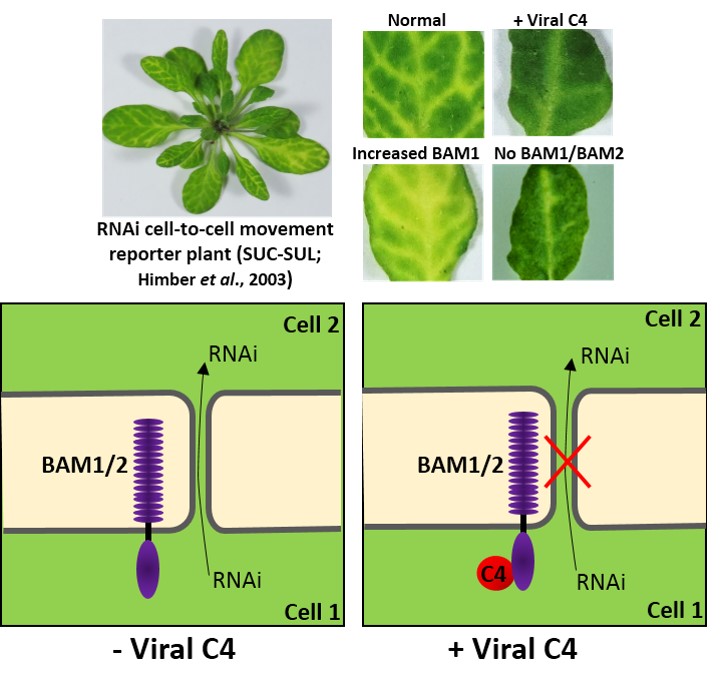Scientists have discovered how plant cells use a receptor protein to warn other cells of a viral invasion – and how one plant virus manages to interfere with this spread of information.
Just like animals, plants are also targets of virus attack – in fact, viral diseases produce serious losses in agriculture worldwide, posing a serious threat to food security. Plant viruses infect the cell and hijack its molecular machinery to replicate and spread, which ultimately results in the development of a disease. But plants cells have “learned” to detect a viral invasion, and in turn activate defence responses to combat the pathogen – which means that successful viruses have had to overcome this barrier, by finding ways to avoid their recognition.
The main anti-viral defence in plants is a process termed RNA interference (RNAi), by which production of viral proteins is halted, therefore impairing the development of the infection. RNAi relies on the production of small RNA molecules (sRNA) that contain sequence information of the virus, which is used to direct this defence system against its viral target.
One remarkable property of RNAi is its ability to move: sRNA can travel from cell to cell, spreading the warning of the existence of an infection in the organism. Movement of sRNA is possibly crucial for anti-viral defence, since distant cells can be alerted and prepared to defend themselves prior to arrival of the virus.
Despite its biological relevance, how RNAi moves from cell to cell had so far remained elusive. Now, a team of scientists from the Shanghai Center for Plant Stress Biology (Chinese Academy of Sciences), led by Dr. Rosa Lozano-Duran, has identified a receptor protein involved in this process – and found a viral protein capable of blocking its function to promote disease.
This study, recently published in PNAS, reveals that a receptor protein named BAM1, a known regulator of plant development, promotes the cell-to-cell movement of RNAi. BAM1 can be found at the cell membrane and in plasmodesmata, which are channels connecting neighbouring cells, and would presumably contribute to the movement of information in the form of sRNA molecules. “How RNAi can move between plant cells has been a long-standing question. The identification of BAM1 as a regulator of this movement is a first step towards a deeper understanding of this crucial process”, says Dr. Tabata Rosas-Diaz, first author of the publication.
“As a result of the evolutionary arms race between hosts and pathogens, if a host protein plays a prominent role in defence, virulent pathogens must evolve to counter its action, or are otherwise unable to cause disease”, explains Dr. Lozano-Duran. Not surprisingly, the team found that one viral protein, named C4, can bind to BAM1 and interfere with the cell-to-cell spread of RNAi. This result highlights the potential relevance of BAM1 in anti-viral defence, and raises the possibility of engineering this protein to boost resistance to pathogens in crops.
These results will pave the way for future discoveries in the field, contributing to the understanding that will enable efficient strategies to fight crop diseases.
This work has been funded by the Chinese Academy of Sciences, the National Natural Science Foundation of China, the 100 Talents program from the Chinese Academy of Sciences, and the Centre of Excellence in Plant and Microbial Science (CEPAMS).
Link to the article:

The viral C4 protein interferes with the cell-to-cell spread of RNAi mediated by the plant BAM1 protein (Imaged by Dr.Rosa Lozano-Duro’s lab)
